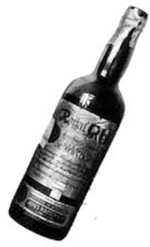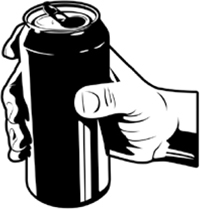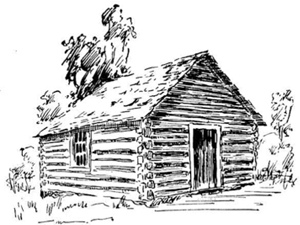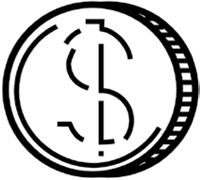Now I Know More (11 page)
Authors: Dan Lewis

The cause was a microbe known as
Saccharomyces cerevisiae
, more commonly known as “baker's yeast” or “brewer's yeast.” As the Environmental Protection Agency notes, not only is the microorganism typically harmless, but it's also particularly useful. It has been used for centuries as a leavening agent for bread and a fermenting agent for alcohol.
Saccharomyces cerevisiae
infections are unheard of, as the microbe almost always passes through the human body without issue.
In this case, though, something was amiss. As NPR reported, a significant amount of
Saccharomyces cerevisiae
had taken residence in the patient's gut. The reasons why were unclear, but the resultâtermed “auto-brewery syndrome”âwas striking. Whenever the man ate anything starchyâ“a bagel, pasta, or even soda” are the examples NPR gaveâthe man was also feeding the
Saccharomyces cerevisiae
. The microbe churned through the carbohydrates and released ethanol as a byproduct. The man was brewing beer in his own stomach and getting drunk from it.
The two doctors who discovered this curiosity
published a paper on the topic
in the
International Journal of Clinical Medicine
, but as others have pointed out, the doctors didn't perform a controlled study nor did they have more than one personâand therefore more than one data pointâto work from. Why the
Saccharomyces cerevisiae
took root in the man's stomach remains unknown, but it's treatableâan antifungal medicine called fluconazole will kill off the intrusive microbes. (Sorryâdespite this, fluconazole probably won't help you sober up after a night out.)
Craft brewing is apparently of particular importance to the people of the state of Oregon. How do we know this? Because in May 2013, the Oregon legislature passed a law making
Saccharomyces cerevisiae
the state's official microbe, in light of the microbe's work in creating beer. (Every state needs an official microbe, right?)

THE NEFARIOUS PLOT TO ENFORCE PROHIBITION
The Eighteenth Amendment to the United States Constitution went into effect in 1919, and early the next year Prohibition began when the Volstead Act became law. The sale, manufacture, or transportation of alcohol became unlawful and would remain illegal until 1933, when the Twenty-First Amendment repealed the Eighteenth. During the interim, however, alcohol-related illnesses and deaths were common. These maladies were the byproduct of speakeasies and moonshine, both of which were cloaked from the law, and therefore the injured were out of the reach of legal remedy.
There was another cause of alcohol-related death during Prohibition: poisoning by the U.S. government.
With alcohol illegal, Prohibition created a huge opportunity for organized crime to enter the market. The lucrative business of bootlegging (the transport of illegal alcohol) created an economic foundation for Al Capone and his gang in Chicago as well as other notorious criminals. Because the sale of all alcohol was illegal, it made good business sense for criminals to focus on hard liquor, which could be made from (legal) industrial ethyl alcohol and therefore had a large profit margin. The problem: industrial alcohol was basically grain alcohol mixed with a solvent or two, making it undrinkable.
The bootleggers hired chemists to fix that, and the chemists succeeded. Before long, illegal but barely palatable booze, derived from industrial alcohol, was flowing throughout speakeasies and the like all across the United States.
The Department of the Treasury, which was charged with enforcement of the Volstead Act, had a solution: They added even more poison to the mix. The bootleggers were unable to make the alcohol entirely safe for drinking, but of course, many bootleggers were murderous criminalsâand they sold the liquor anyway. The Treasury's plan failed to stem the tide of alcohol flowing in the streets but did sadly manage to claim the lives of as many as 10,000 people.
Prohibition turned many citizens into everyday criminals, many by way of homemade wine. Grocers could sell grape concentrate, an item that in and of itself lacked any alcohol. However, if treated in a certain way, grape concentrate would ferment, turning it into wine. In order to “avoid” this outcome, many grape concentrate packages were labeled with a warningâoutlining exactly what not to do in order to ensure that your grape concentrate did not ferment.

HOW TO SMUGGLE COKE INTO SOVIET RUSSIA
In 1992, with an incredible amount of fanfare, Pepsi announced Crystal Pepsi, a clear cola beverage aimed at revolutionizing the soft-drink world. The drink did well initially and even spurred Coca-Cola to come out with its own clear cola product, called Tab Clear. Neither beverage would survive commercially for very long. Crystal Pepsi was off shelves in the United States by the end of 1993; according to Fast Company, one of the executives behind the concept later admitted that the product just didn't taste good. Tab Clear, somehow, persevered into the middle of 1994. Its marketing was suspectâfor some reason, it was only sold in a can, a curious choice for a beverage whose main selling point was the fact that it was translucent.
Given these failures, one would assume that these massive soft-drink companies had never before attempted to make a cola that wasn't caramel-colored. But well before Crystal Pepsi and Tab Clear came another different-colored cola, informally called White Coke.
In the 1940s, the Marshal of the Soviet Union (the de facto highest rank in the Soviet military), a man named Georgy Zhukov, took a liking to Coca-Cola. However, Coke was symbolic of America, of capitalism, etc., and Zhukovâgiven his position of prominenceâcouldn't be seen drinking the stuff. Through his American counterpart General Mark W. Clark (who in turn took the question to President Truman), Zhukov asked that the Coca-Cola Company develop a cola that visually resembled vodka. This way, the
New York Times
reported, he could be seen drinking it whenever he liked, without risking the ire of Joseph Stalin. (Apparently, it was okay for Soviet military leaders to have a vodka.) Coke complied.
For years, Coke provided the cola to Zhukov and somehow managed to avoid most of the red tape that defined importations into the USSR during that period. The cola was never introduced to consumers in the States.
In 1990, the Mars candy company introduced PB Max, a cookie topped with peanut butter, and the whole thing covered in milk chocolate. Like Crystal Pepsi and Tab Clear, PB Max did not last very longâit was discontinued a few years later. Unlike the colas, though, PB Max was a commercial success. Why was it discontinued? According to an anonymous executive cited by Joël Glenn Brenner in his bestselling book
The Emperors of Chocolate
, the Mars family has a distaste for peanut butter and opted to take PB Max out of their product line, despite its substantial contributions to the family's coffers. (This makes sense; Mars's peanut butter M&M's, while common now, are relatively new compared to Reese's Pieces.)

THE SOVIET FAMILY LOST TO HISTORY
In 1978, a team of Soviet geologists were scanning the Siberian wilderness a hundred miles or so north of the Mongolian border. The area was an undeveloped wildernessâno roads, no electricity, no reservoirs or running water. Like most of Siberia, it was also uninhabited. Which made the geologists' discovery rather unexpected. While flying above the taiga, they saw, below them, a house.
An inhabited house.
During the reign of Peter the Great, a group of fundamentalist members of the Russian Orthodox Church known as Old Believers were oppressed by the tsarist government. Many fled eastward to the edges of Siberia, hoping that isolation would buy them a respite from persecution. For two centuries, this worked well, but when the Bolsheviks took power, the few remaining Old Believers scattered, many going to Bolivia.
However, one family pressed further into Siberia. They were the people discovered by the helicopter pilot scanning the landscape below. Living in a ramshackle, hand-built wooden house was a family of fiveâa father and four childrenâand they had been there a long, long time. In 1936, Karp Lykov, his wife, Akulina, and their two children, Savin and Natalia, fled after Karp's brother was killed by Communists. They began a new life for themselves in the middle of nowhere. Akulina gave birth to two more children, son Dmitri and daughter Agafia, in the 1940s (yes, while alone in the taiga).
The family survived on a diet mostly consisting of pine nuts, wild berries, and some rye and potatoes harvested from what they brought with them, but those were meager even during good times. In the 1950s and into the early 1960s, weather and wildlife seemed to conspire against the Lykovs, and they endured a famine. Akulina died from starvation in 1961. Incredibly, all four children were literate and relatively knowledgeable about the outside world. They even knew how to write; as
Smithsonian
magazine reported, their mother taught them the skill “using sharpened birch sticks dipped into honeysuckle juice as pen and ink.”
The Lykovs lasted four decades in the wilderness before encountering another human being. While most of the world was struggling with war in Europe, the Lykovs were entirely unaware of the deaths of millions of their countrymen and others. They knew nothing of the Cold War, the Space Race, or of the other scientific, cultural, or political changes throughout the Soviet Union. Karp did, however, show a surprisingly strong appreciation for how technology had advanced. He noticed in the heavens something he attributed to people sending star-like fires into space. What he actually saw were satellites moving across the evening sky.
After being discovered by the geologists in 1978, the Lykovs decided to accept some assistance from the outside world but otherwise chose to remain in their log cabin more than 100 miles away from another human home. In 1981, three of the childrenâDmitri, Savin, and Nataliaâdied from unrelated causes, leaving Karp and his daughter Agafila. Karp passed in 1988, then in his late eighties. Agafila, as of 2013, lives alone, still at the only home she's ever known.
Peter the Great really hated beards, seeing them as a throwback to Russia's antiquated history. His solution: a beard tax. Pay it, and you got to keep your beard; otherwise, you had to shave. To help enforce the tax, bearded men (who paid up) were issued a coin as a receipt, which unshaven men had to produce to avoid further fines and harassments. But the tax was short-livedâit proved unpopular and resulted in riots as many refused to either pay or shave.
